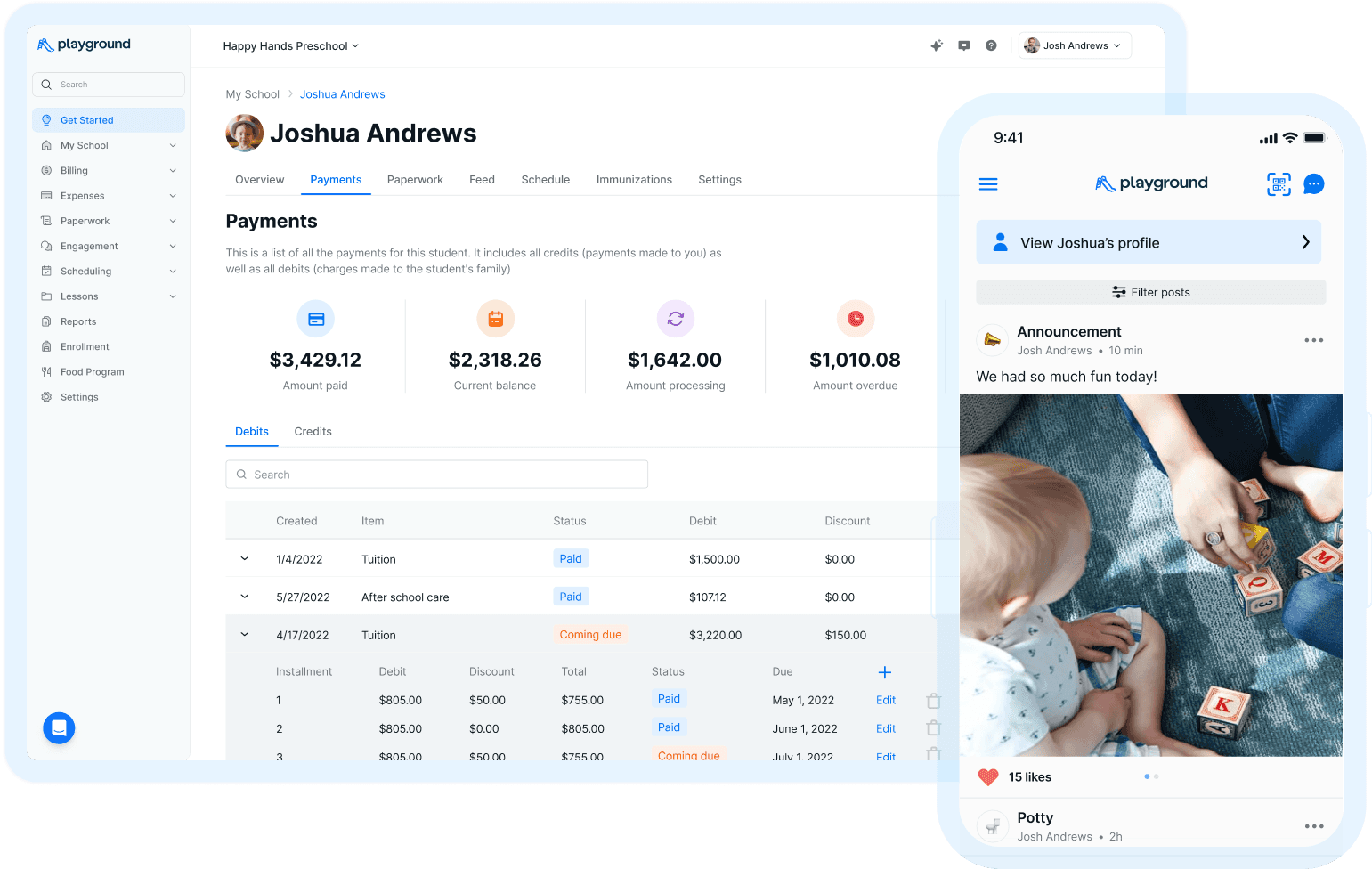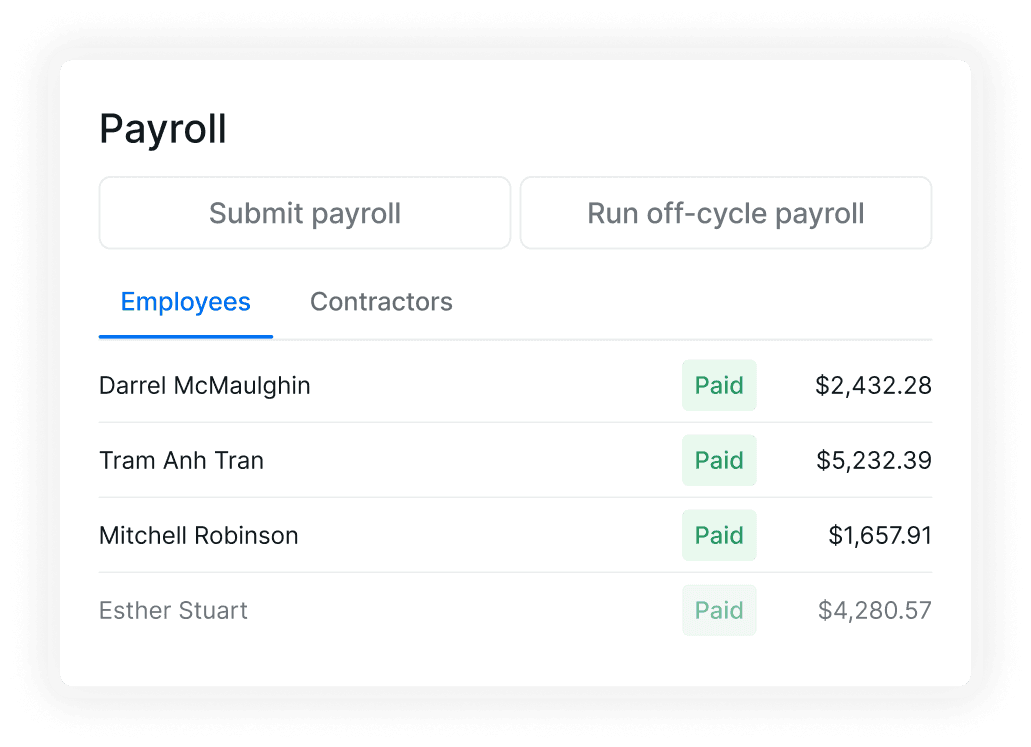Behavior Management: Navigating Difficult Conversations with Parents


Angela Vencio

Make your families & teachers happier
All-in-one child care management platform with billing, attendance, registration, communication, payroll, and more!
5.0 Rating

Make your families & teachers happier
All-in-one child care management platform with billing, attendance, registration, communication, payroll, and more!
5.0 Rating
With a highly demanding career that deals primarily with caring for multiple children, child care lends itself to often having to deal with difficult or uncomfortable conversations with parents – whether it is about behavior, academics, or a place of concern. It can be very overwhelming and challenging for both teachers and parents to participate in these conversations in a mindful and empathetic approach. These are some strategies for child care parent teacher communication:
Partner with parents (Same team approach)
Understand that the intent of communication is not necessarily to come to a solution right away, especially with parent contact, but instead a way of creating an open space for communication where both caregivers can speak openly about their feelings and beliefs. It is important that we reiterate to families that we are on the same team. Inviting the perspectives and continually checking in with families creates a warm, positive relationship where the parent can feel comfortable to bring up concerns, provide suggestions that have worked at home, and ask questions as needed. As much as we as educators are a resource to them, they as parents are a resource to us. Both parts of the team contribute valuable knowledge: While we as educators can provide suggestions from an educated, professional point of view, parents are able to provide personal insight on a child that we may not always get to witness. Thus, combining knowledge is the best way to get a detailed picture of the child – and from there, behaviors can be targeted. Asking parents questions about their methods at home and asking for their suggestions on how to implement these behavior strategies at school show parents that their input is important and valued. It bridges the divide between having two separate environments of caregiving, and instead strives to create a singular, more inclusive and consistent caregiving environment for the child.
Fostering a team approach with the family over time will help lessen the anxiety over having these difficult discussions. The more we practice this kind of open communication, we can see the lens shifts from “breaking the news” to “how can we work together to target this behavior?”
Let go of your biases
Oftentimes, parents are overwhelmed with tasks from their day and need to leave the door quickly. Hearing a dreaded “I have to talk to you” before leaving may be the last thing a parent wants to hear. Be mindful of parents’ time by providing different modes of availability - whether it is in person, through phone call, or email. Consider that a parent who is not available to talk at such short notice is not an indication of their lack of involvement in parenting - but rather, a cry for accommodation. A busy parent may benefit from being asked “When is a good time for you?” or “Would you prefer to talk about this in a phone call?” - this gives them the choice of what parent communication style works best for them, as well as the time and space needed to process the rest of their day’s events so they can be fully attentive and engaged in the conversation.
Be critical of yourself as well, to recognize your own biases when you communicate with parents - how are you entering the conversation? Are you feeling overwhelmed and upset? How are your feelings translating into your verbal and non-verbal communication? Are you sharing information about their child to them in a public space around other families, or have you chosen a private, secluded area? How does an arms-crossed stance or frown set the tone for the initial approach? Negative non-verbal behaviors, whether or not you are mindful of them, set the tone for how the conversation will go and can interfere in building a positive relationship. Trying to continue a conversation that feels stagnant can be a frustrating loop of parent teacher communication- and this strained relationship can make it difficult to come to a mutual compromise.
Ask for help
As caregivers, we take pride in our ability to de-escalate situations at any given notice. There will be times, however, where we may have conversations with families that feel intimidating, overwhelming, or unproductive. This is normal and part of our jobs!
Having a third-party present, like a supervisor or colleague, is a great way to mediate the conversation and calm down any big feelings without any bias. Remember that all big feelings aside, the goal for all parties is the same: We all want to see the success of the child.
Maintain the bond
Not every conversation has to be a difficult one - parents like to hear the positive experiences as well! Make a habit out of occasionally sharing positive parts about children’s day - parents deserve to know that their child is capable and competent. Being able to identify and share some of children’s littlest accomplishments shows an active investment and care about the child’s progress - and provides some reassurance that the parent is doing their part. It is said that it takes a village to raise a child; Once we start seeing positive behaviors, that’s a sign that communication between caregivers is strong and healthy!
Use child care parent communication apps such as Playground to share real-time updates with parents including photos and messages of their children. Posting photos of their children smiling, having fun in an activity, or playing with other children is a great way to build a positive relationship with parents.
When educators and parents partner together, it creates consistency in the household and school units - one where all parties can work together to target certain behaviors and ensure children’s success. Our role as educators not only entails the care for children, but the inevitable care for parents as they learn to juggle the reality of balancing work life and parenting. When both parties have the same goal of the child’s success in their mind, imagine the possibilities for the child!
With a highly demanding career that deals primarily with caring for multiple children, child care lends itself to often having to deal with difficult or uncomfortable conversations with parents – whether it is about behavior, academics, or a place of concern. It can be very overwhelming and challenging for both teachers and parents to participate in these conversations in a mindful and empathetic approach. These are some strategies for child care parent teacher communication:
Partner with parents (Same team approach)
Understand that the intent of communication is not necessarily to come to a solution right away, especially with parent contact, but instead a way of creating an open space for communication where both caregivers can speak openly about their feelings and beliefs. It is important that we reiterate to families that we are on the same team. Inviting the perspectives and continually checking in with families creates a warm, positive relationship where the parent can feel comfortable to bring up concerns, provide suggestions that have worked at home, and ask questions as needed. As much as we as educators are a resource to them, they as parents are a resource to us. Both parts of the team contribute valuable knowledge: While we as educators can provide suggestions from an educated, professional point of view, parents are able to provide personal insight on a child that we may not always get to witness. Thus, combining knowledge is the best way to get a detailed picture of the child – and from there, behaviors can be targeted. Asking parents questions about their methods at home and asking for their suggestions on how to implement these behavior strategies at school show parents that their input is important and valued. It bridges the divide between having two separate environments of caregiving, and instead strives to create a singular, more inclusive and consistent caregiving environment for the child.
Fostering a team approach with the family over time will help lessen the anxiety over having these difficult discussions. The more we practice this kind of open communication, we can see the lens shifts from “breaking the news” to “how can we work together to target this behavior?”
Let go of your biases
Oftentimes, parents are overwhelmed with tasks from their day and need to leave the door quickly. Hearing a dreaded “I have to talk to you” before leaving may be the last thing a parent wants to hear. Be mindful of parents’ time by providing different modes of availability - whether it is in person, through phone call, or email. Consider that a parent who is not available to talk at such short notice is not an indication of their lack of involvement in parenting - but rather, a cry for accommodation. A busy parent may benefit from being asked “When is a good time for you?” or “Would you prefer to talk about this in a phone call?” - this gives them the choice of what parent communication style works best for them, as well as the time and space needed to process the rest of their day’s events so they can be fully attentive and engaged in the conversation.
Be critical of yourself as well, to recognize your own biases when you communicate with parents - how are you entering the conversation? Are you feeling overwhelmed and upset? How are your feelings translating into your verbal and non-verbal communication? Are you sharing information about their child to them in a public space around other families, or have you chosen a private, secluded area? How does an arms-crossed stance or frown set the tone for the initial approach? Negative non-verbal behaviors, whether or not you are mindful of them, set the tone for how the conversation will go and can interfere in building a positive relationship. Trying to continue a conversation that feels stagnant can be a frustrating loop of parent teacher communication- and this strained relationship can make it difficult to come to a mutual compromise.
Ask for help
As caregivers, we take pride in our ability to de-escalate situations at any given notice. There will be times, however, where we may have conversations with families that feel intimidating, overwhelming, or unproductive. This is normal and part of our jobs!
Having a third-party present, like a supervisor or colleague, is a great way to mediate the conversation and calm down any big feelings without any bias. Remember that all big feelings aside, the goal for all parties is the same: We all want to see the success of the child.
Maintain the bond
Not every conversation has to be a difficult one - parents like to hear the positive experiences as well! Make a habit out of occasionally sharing positive parts about children’s day - parents deserve to know that their child is capable and competent. Being able to identify and share some of children’s littlest accomplishments shows an active investment and care about the child’s progress - and provides some reassurance that the parent is doing their part. It is said that it takes a village to raise a child; Once we start seeing positive behaviors, that’s a sign that communication between caregivers is strong and healthy!
Use child care parent communication apps such as Playground to share real-time updates with parents including photos and messages of their children. Posting photos of their children smiling, having fun in an activity, or playing with other children is a great way to build a positive relationship with parents.
When educators and parents partner together, it creates consistency in the household and school units - one where all parties can work together to target certain behaviors and ensure children’s success. Our role as educators not only entails the care for children, but the inevitable care for parents as they learn to juggle the reality of balancing work life and parenting. When both parties have the same goal of the child’s success in their mind, imagine the possibilities for the child!
With a highly demanding career that deals primarily with caring for multiple children, child care lends itself to often having to deal with difficult or uncomfortable conversations with parents – whether it is about behavior, academics, or a place of concern. It can be very overwhelming and challenging for both teachers and parents to participate in these conversations in a mindful and empathetic approach. These are some strategies for child care parent teacher communication:
Partner with parents (Same team approach)
Understand that the intent of communication is not necessarily to come to a solution right away, especially with parent contact, but instead a way of creating an open space for communication where both caregivers can speak openly about their feelings and beliefs. It is important that we reiterate to families that we are on the same team. Inviting the perspectives and continually checking in with families creates a warm, positive relationship where the parent can feel comfortable to bring up concerns, provide suggestions that have worked at home, and ask questions as needed. As much as we as educators are a resource to them, they as parents are a resource to us. Both parts of the team contribute valuable knowledge: While we as educators can provide suggestions from an educated, professional point of view, parents are able to provide personal insight on a child that we may not always get to witness. Thus, combining knowledge is the best way to get a detailed picture of the child – and from there, behaviors can be targeted. Asking parents questions about their methods at home and asking for their suggestions on how to implement these behavior strategies at school show parents that their input is important and valued. It bridges the divide between having two separate environments of caregiving, and instead strives to create a singular, more inclusive and consistent caregiving environment for the child.
Fostering a team approach with the family over time will help lessen the anxiety over having these difficult discussions. The more we practice this kind of open communication, we can see the lens shifts from “breaking the news” to “how can we work together to target this behavior?”
Let go of your biases
Oftentimes, parents are overwhelmed with tasks from their day and need to leave the door quickly. Hearing a dreaded “I have to talk to you” before leaving may be the last thing a parent wants to hear. Be mindful of parents’ time by providing different modes of availability - whether it is in person, through phone call, or email. Consider that a parent who is not available to talk at such short notice is not an indication of their lack of involvement in parenting - but rather, a cry for accommodation. A busy parent may benefit from being asked “When is a good time for you?” or “Would you prefer to talk about this in a phone call?” - this gives them the choice of what parent communication style works best for them, as well as the time and space needed to process the rest of their day’s events so they can be fully attentive and engaged in the conversation.
Be critical of yourself as well, to recognize your own biases when you communicate with parents - how are you entering the conversation? Are you feeling overwhelmed and upset? How are your feelings translating into your verbal and non-verbal communication? Are you sharing information about their child to them in a public space around other families, or have you chosen a private, secluded area? How does an arms-crossed stance or frown set the tone for the initial approach? Negative non-verbal behaviors, whether or not you are mindful of them, set the tone for how the conversation will go and can interfere in building a positive relationship. Trying to continue a conversation that feels stagnant can be a frustrating loop of parent teacher communication- and this strained relationship can make it difficult to come to a mutual compromise.
Ask for help
As caregivers, we take pride in our ability to de-escalate situations at any given notice. There will be times, however, where we may have conversations with families that feel intimidating, overwhelming, or unproductive. This is normal and part of our jobs!
Having a third-party present, like a supervisor or colleague, is a great way to mediate the conversation and calm down any big feelings without any bias. Remember that all big feelings aside, the goal for all parties is the same: We all want to see the success of the child.
Maintain the bond
Not every conversation has to be a difficult one - parents like to hear the positive experiences as well! Make a habit out of occasionally sharing positive parts about children’s day - parents deserve to know that their child is capable and competent. Being able to identify and share some of children’s littlest accomplishments shows an active investment and care about the child’s progress - and provides some reassurance that the parent is doing their part. It is said that it takes a village to raise a child; Once we start seeing positive behaviors, that’s a sign that communication between caregivers is strong and healthy!
Use child care parent communication apps such as Playground to share real-time updates with parents including photos and messages of their children. Posting photos of their children smiling, having fun in an activity, or playing with other children is a great way to build a positive relationship with parents.
When educators and parents partner together, it creates consistency in the household and school units - one where all parties can work together to target certain behaviors and ensure children’s success. Our role as educators not only entails the care for children, but the inevitable care for parents as they learn to juggle the reality of balancing work life and parenting. When both parties have the same goal of the child’s success in their mind, imagine the possibilities for the child!
Playground is the only app directors need to run their early child care center. Playground manages billing, attendance, registration, communication, paperwork, reporting, and more for child care programs. 100,000+ directors, teachers, and families trust Playground to simplify their lives.
Learn more by scheduling a free personalized demo.
See what Playground can do for you
Learn how our top-rated child care management platform can make your families & teachers happier while lowering your costs



Explore more
Stay in the loop.
Sign up for Playground updates.
Stay in the loop.
Sign up for Playground updates.
Stay in the loop.
Sign up for the updates.
© 2024 Carline Inc. All rights reserved.

© 2024 Carline Inc. All rights reserved.

© 2024 Carline Inc. All rights reserved.

Behavior Management: Navigating Difficult Conversations with Parents
Published Nov 17, 2022
|




